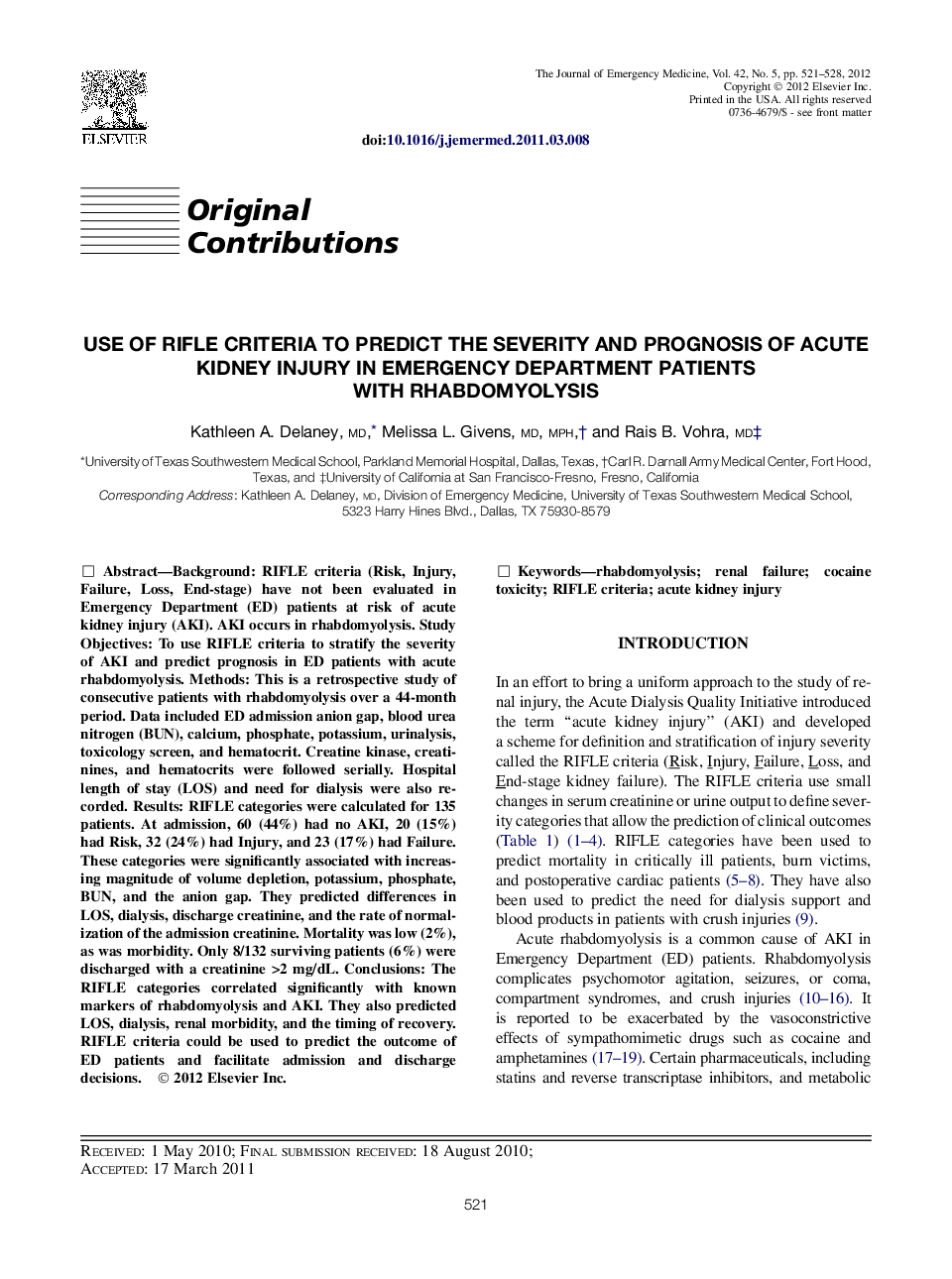| Article ID | Journal | Published Year | Pages | File Type |
|---|---|---|---|---|
| 3247462 | The Journal of Emergency Medicine | 2012 | 8 Pages |
BackgroundRIFLE criteria (Risk, Injury, Failure, Loss, End-stage) have not been evaluated in Emergency Department (ED) patients at risk of acute kidney injury (AKI). AKI occurs in rhabdomyolysis.Study ObjectivesTo use RIFLE criteria to stratify the severity of AKI and predict prognosis in ED patients with acute rhabdomyolysis.MethodsThis is a retrospective study of consecutive patients with rhabdomyolysis over a 44-month period. Data included ED admission anion gap, blood urea nitrogen (BUN), calcium, phosphate, potassium, urinalysis, toxicology screen, and hematocrit. Creatine kinase, creatinines, and hematocrits were followed serially. Hospital length of stay (LOS) and need for dialysis were also recorded.ResultsRIFLE categories were calculated for 135 patients. At admission, 60 (44%) had no AKI, 20 (15%) had Risk, 32 (24%) had Injury, and 23 (17%) had Failure. These categories were significantly associated with increasing magnitude of volume depletion, potassium, phosphate, BUN, and the anion gap. They predicted differences in LOS, dialysis, discharge creatinine, and the rate of normalization of the admission creatinine. Mortality was low (2%), as was morbidity. Only 8/132 surviving patients (6%) were discharged with a creatinine >2 mg/dL.ConclusionsThe RIFLE categories correlated significantly with known markers of rhabdomyolysis and AKI. They also predicted LOS, dialysis, renal morbidity, and the timing of recovery. RIFLE criteria could be used to predict the outcome of ED patients and facilitate admission and discharge decisions.
